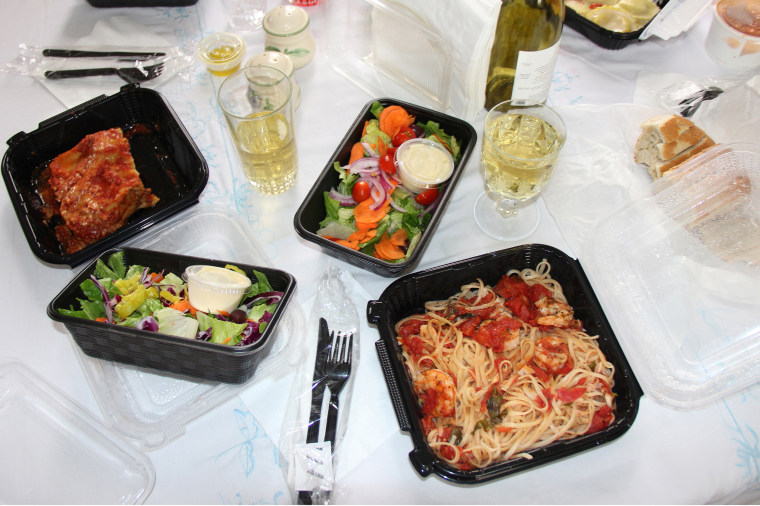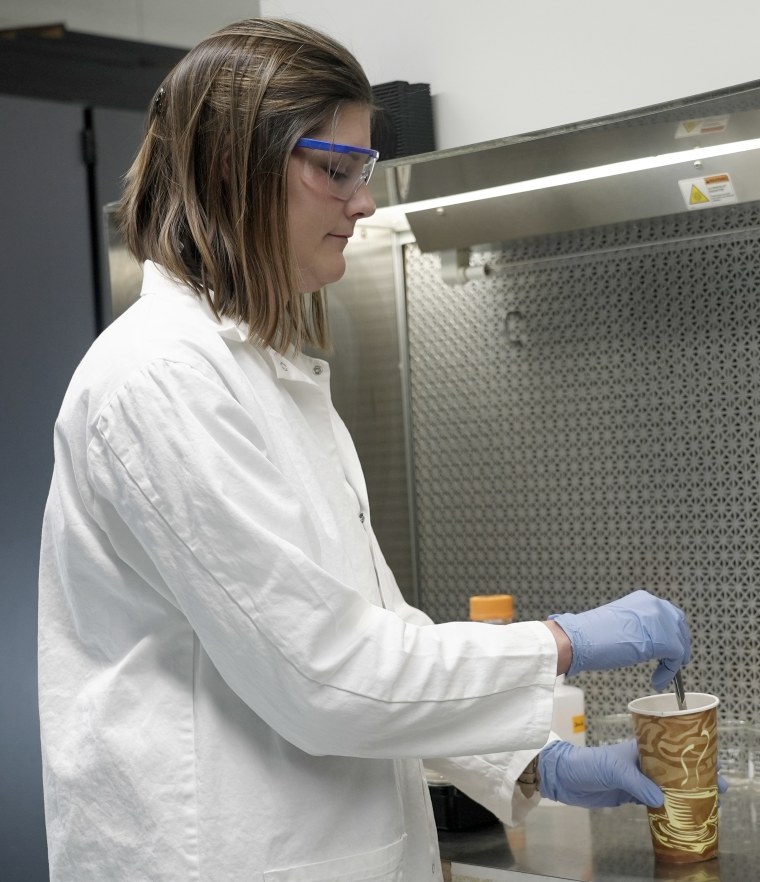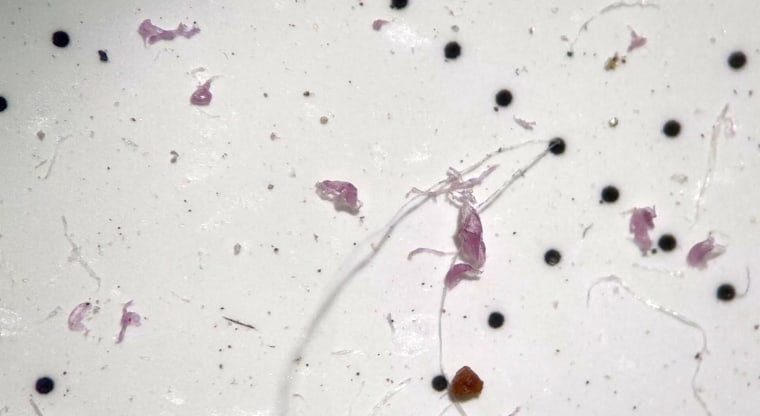Scientists are finding microplastics everywhere from brain tissue to arteries and warning of the health risks posed by their buildup inside our bodies. They’re also discovering just how easily the tiny particles get there.
Microplastics don’t just shed off of plastic items from overuse, like when a water bottle breaks down over weeks or months of being washed and refilled. They also leach into our food and drinks with even the brief use of a product with plastic components, alarming scientists.
“We’re talking about cardiovascular mortality,” said Dr. Leonardo Trasande, director of the Grossman Center for the Investigation of Environmental Hazards at New York University. “We’re also talking about hormone-sensitive cancers — breast, thyroid, ovarian, not to mention kidney cancer — that have been associated with these chemical exposures.”
Microplastics are tiny fragments of plastic less than 5 millimeters in diameter, some a fraction of the width of a strand of human hair. And nanoplastics, even tinier plastic particles measuring less than a millionth of a meter, are too small to see with standard light-based microscopes.

Scientists have found these particles across the globe, from Antarctic snow to coral reefs and throughout our bodies, including in babies. They’re raising concerns about how quickly microplastics can build up in humans and ecosystems. And while much remains unknown about their impacts, researchers increasingly fear these contaminants are fueling ecological and health crises.
Microplastics are constantly coming off of everyday items like containers and cups, including products we don’t always think of as plastic, according to Victoria Fulfer, a postdoctoral fellow at the University of Rhode Island studying how microplastics get into water.
“We’re storing a lot of our food in plastic,” said Fulfer, who also works for the 5 Gyres Institute, a nonprofit group researching plastic pollution.

“Not only is it packaged in plastic when we buy it from the store, but then we cook it, and we often put it in plastic containers to store it in our fridge, because it’s easy and it’s cheap,” she said. “And that plastic is leaching into our food.”
Fulfer’s research has shown that even tiny plastic particles can amass in large volumes over relatively short periods, reflecting just how widely used plastic materials have become — and how easily they break down. A paper she published in 2023 found more than 1,000 tons of microplastics have built up on the floor of Rhode Island’s Narragansett Bay in just the last two decades.
Fulfer gave NBC News a demonstration of how easily microplastics can shed into food and drinks at her university laboratory. She chopped up just two slices of a white onion on a red plastic cutting board, rinsed the slices, filtered the rinsing water and put the filter under a microscope. The slide showed tiny red specks of plastic that had come off the cutting board and onto the onion.

When Fulfer put hot pasta in a black plastic takeout container and followed the same procedure, she again saw microplastics under the microscope. Even more came off the container and leached into the pasta when she microwaved it in the same vessel.
“Mostly, when a container says ‘microwave safe,’ it means it’s safe for the container to be in the microwave — it’s not going to melt,” said Fulfer. “But that doesn’t mean that it’s safe for you as a person, because microwaving plastic particularly changes the chemical bonds — they make them more weak. And that allows any chemicals that are in those plastics, and also nanoplastics, to leach from that container into the food that you’re heating up.”
A recent study at the University of Nebraska found heating a plastic container in the microwave caused more microplastics and nanoplastics to leach into food than refrigerating the container or keeping it at room temperature.
The problem isn’t just with single-use containers that are meant to be thrown out — already a major source of plastic pollution worldwide. Fulfer also found microplastics when she microwaved peas in a plastic container that was designed to be reusable.
Even products people might not think of as plastic can shed microplastics, Fulfer has found. When she microwaved hot water in a paper cup with a laminated interior, stirred it briefly, filtered it and ran an analysis using lasers, she found polyethylene fragments, a type of microplastic.
Other researchers have even flagged chewing gum as a potential culprit, with one very small study finding a single piece could release hundreds to thousands of microplastics into saliva.
Researchers say the plastic in our food and drinks is likely to be building up in our bodies.
In a study published this year, researchers with University of New Mexico Health Sciences found “alarmingly high” levels of microplastics in human brains. There appeared to be more in people with dementia, though scientists don’t know whether more plastic actually caused those symptoms. A separate study published last year by a group of Italian researchers found people with microplastics in the plaque in their arteries had a higher risk of heart attack, stroke or death — though that finding also doesn’t prove a direct cause.
Plastic producers insist their products are safe and say there are few materials that can rival plastics for versatility, cost and convenience.
“There is nothing more important to our industry than safe products and materials,” said Plastics Industry Association President and CEO Matt Seaholm. “These materials are not only safe but also essential to our daily lives — keeping food fresh, ensuring medical supplies remain sterile, and enhancing overall quality of life.”
Trasande said consumers don’t need to cut out all plastics but recommended using them less. “We need to take the safe and simple steps now to reduce our plastic footprint,” he said.
That could involve switching to more glass or stainless steel containers, or swapping out plastic cutting boards with wooden ones. For heating food and drinks up in the microwave, glass or ceramic might be a better option.
“We’re talking about very low-dose exposures that have serious impacts,” Trasande said. “Changing those exposures, even in that very low range, can have huge benefits.”

